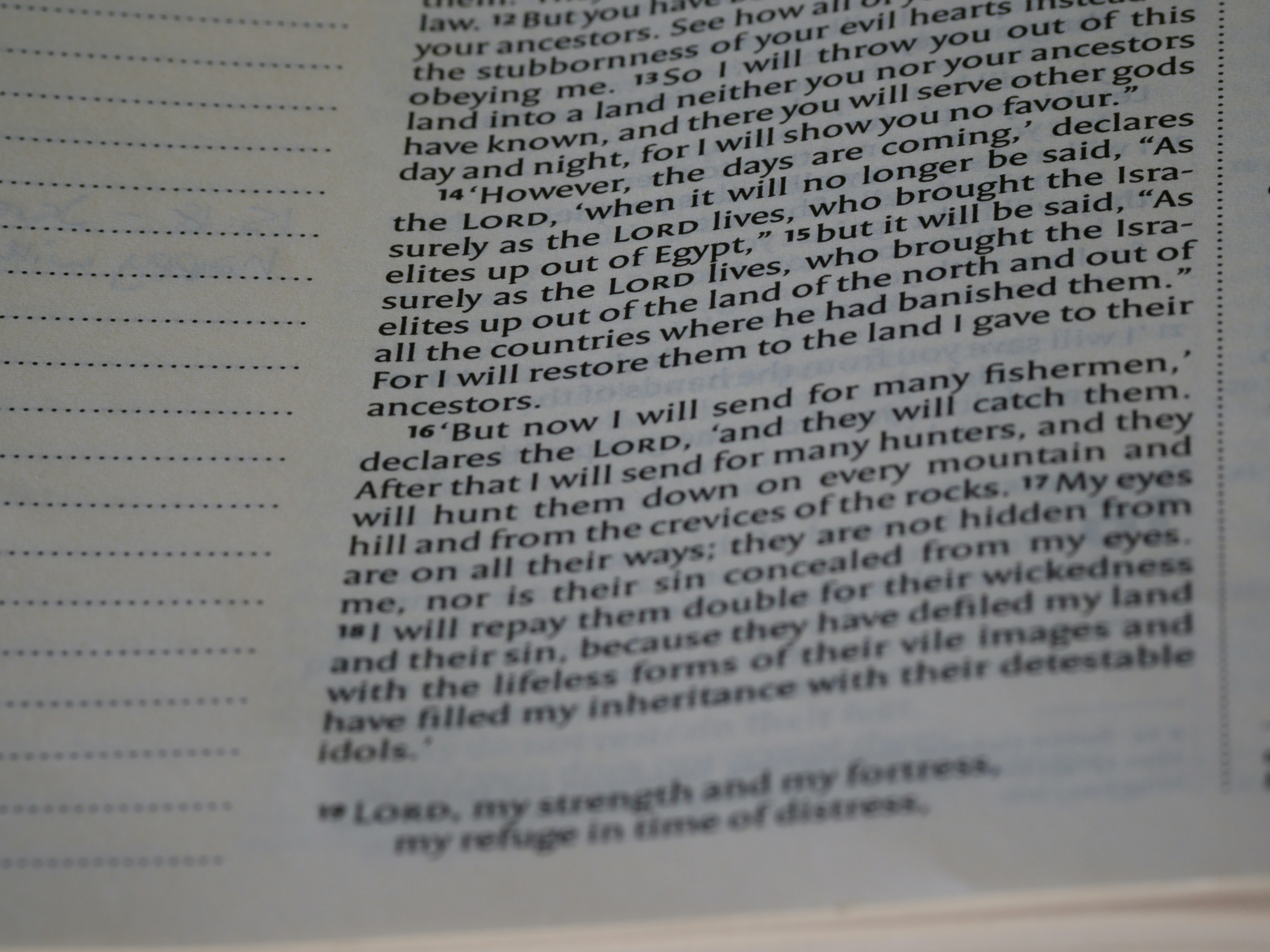Unraveling the Historical Evidence of Jesus’ Crucifixion in Ancient Texts
Introduction to the Topic of Jesus’ Crucifixion
The crucifixion of Jesus Christ stands as one of the most pivotal events in both historical and theological contexts. Traditionally viewed as a cornerstone of Christian belief, this event is not only significant for religious followers but is also a point of interest for historians, archaeologists, and scholars alike. The act of crucifixion was a common form of execution in the Roman Empire, thereby placing Jesus’ death within a well-documented framework of ancient practices. However, the implications of this event extend far beyond the manner of execution, affecting subsequent religious thought, cultural norms, and historical narratives.
This blog post aims to dive into the historical evidence of Jesus’ crucifixion as found in various ancient texts. By examining sources ranging from biblical scripture to non-Christian writings, we intend to illuminate how these accounts contribute to our understanding of Jesus as a historical figure, as well as the significance of his death on the cross. Notably, the crucifixion is often seen as a moment that catalyzed the emergence of early Christianity and altered the course of history. As such, the historical evidence not only affirms the event’s occurrence but also enriches our comprehension of its meaning.
Biblical Accounts of the Crucifixion
The crucifixion of Jesus is a pivotal event recorded in the New Testament, specifically within the four Gospels: Matthew, Mark, Luke, and John. Each Gospel narrates the circumstances surrounding Jesus’ trial and execution, offering unique perspectives while collectively affirming the fundamental aspects of this historical event. Notably, these accounts share a common theme of injustice leading up to the crucifixion, highlighting the tension between Jesus and the religious authorities of the time.
The Gospel of Matthew provides a detailed account where the political undertones of Jesus’ trial are evident. Matthew emphasizes the role of Pontius Pilate in the proceedings, illustrating the reluctance of Roman authorities to condemn an innocent man. In context, this aligns with Matthew’s audience, who were likely grappling with their understanding of Jesus’ messianic role against a backdrop of Roman oppression.
Conversely, the Gospel of Mark, which is often considered the earliest Gospel, presents a more straightforward narrative. Mark’s portrayal focuses on the acknowledgment of Jesus’ suffering and the abandonment he faced, creating a vivid, stark account that resonates with early Christian communities facing persecution. Mark’s brevity, coupled with intense emotion, underscores the suffering motif central to understanding Jesus’ crucifixion.
Similarly, the Gospel of Luke provides a unique angle by emphasizing themes of forgiveness and redemption. Luke reports Jesus’ words on the cross, offering a message of compassion even in the face of death. His narrative reflects a broader theological intent, aiming to convey the universal significance of Jesus’ sacrifice.
Finally, the Gospel of John depicts the crucifixion with an emphasis on Jesus’ divine nature, portraying events in a manner that underlines the fulfillment of scripture. This distinctive portrayal suggests a theological framework that seeks to connect Jesus’ death with the overarching narrative of salvation history, inviting readers to introspect on the divine implications of the crucifixion.
While there are variances in details among these Gospel accounts, they collectively contribute to the historical evidence of Jesus’ crucifixion, presenting a multifaceted view that invites critical engagement and reflection upon such a central event in the Christian faith.
Non-Christian Sources on Jesus’ Death
To gain a comprehensive understanding of the historical evidence surrounding Jesus’ crucifixion, it is essential to examine non-Christian sources. Notably, the works of Roman historians such as Tacitus and Jewish historians like Josephus provide critical insights into this pivotal event. These sources serve as valuable contemporary testimonies that corroborate aspects of the New Testament narrative, enhancing the credibility of the events surrounding Jesus’ death.
Tacitus, a first-century Roman historian, references the crucifixion of Jesus in his Annals, composed around 116 CE. In this account, Tacitus details how Emperor Nero blamed the Christians for the Great Fire of Rome in 64 CE and mentions that Christ was executed during the reign of Pontius Pilate in Judea. This passage is significant not only for its acknowledgment of Jesus but also for documenting his crucifixion as a matter of historical record. Tacitus’ writings reflect both the Roman perspective on early Christians and contextualize Jesus’ death within the larger framework of Roman governance and societal issues at the time.
Josephus, a prominent Jewish historian of the first century, also addresses Jesus in his key work, Antiquities of the Jews. Although parts of his accounts have been subject to debate regarding authenticity, the references to Jesus’ crucifixion remain among the most discussed. Josephus mentions Jesus being executed by Pilate, which serves to further establish historical consensus regarding the event. Such non-Christian accounts provide valuable insights into the significance of Jesus’ death in both Jewish and Roman contexts, illustrating not only the cultural perceptions of Jesus but also the implications of his crucifixion for early followers of the faith.
These historical texts play a crucial role in analyzing the events that led to Jesus’ crucifixion and offer a broader understanding of its impact beyond the confines of Christian doctrine.
The Role of Roman Historical Context
The crucifixion of Jesus is deeply embedded in the political and social framework of the Roman Empire during the first century. This period was characterized by significant unrest and political strife, particularly in Judea, a province of the Empire that was often at odds with Roman rule. The Roman authorities sought to maintain order and suppress any potential insurrections, which were viewed as direct threats to the stability of the Empire. This environment undoubtedly set the stage for Jesus’ crucifixion.
Under Roman governance, legal practices were established to address acts of defiance and political challenges. Crucifixion was employed as a method of execution primarily reserved for slaves, non-Romans, and those considered enemies of the state. The decision to crucify Jesus was not only a reflection of His perceived threat as a figure promoting radical change but also a calculated move to deter followers and potential insurrections. By publicly executing someone accused of claiming kingship, the Roman authorities aimed to reinforce their power and send a clear message about the consequences of rebellion against their authority.
The political landscape of the time played a crucial role in Jesus’ trial and eventual execution. Influential groups, such as the Sanhedrin, found common ground with the Roman governor, Pontius Pilate, in their desire to neutralize what they perceived as a destabilizing influence. Pilate’s willingness to comply with local pressures illustrates how intricate the interplay between Roman law and local customs was during this era. The intersection of legal, political, and social dynamics illustrates that Jesus’ crucifixion was not solely a religious event but a pivotal moment in Roman history, reflecting the Empire’s broader strategies for maintaining control.
Archaeological Findings Related to Crucifixion
The practice of crucifixion as a method of execution in the ancient world is substantiated by a variety of archaeological findings. Among the most compelling evidence are the remains of crucified individuals uncovered in various locations, which provide tangible proof of the brutal nature of this form of punishment. One notable discovery occurred in 1968, when archaeologists excavated a burial site in Jerusalem. There, they unearthed the skeletal remains of a man who bore the unique marks of crucifixion. The bones of this individual showed clear signs of having been nailed through the feet and wrists, aligning with historical texts that describe how crucifixion was carried out. Most strikingly, the presence of an iron nail still lodged in the heel bone offers a physical representation that corroborates historical accounts.
Furthermore, inscriptions and artifacts related to crucifixion have been uncovered that reinforce the historical understanding of this execution method. One significant artifact is the “Alexandrian Cipher,” a fragment that references the punishment of individuals by crucifixion during the time of Roman rule. Such inscriptions serve not only as historical documentation, but also illustrate how deeply integrated the practice was within the fabric of Roman society. Additionally, various artifacts from the period, including pottery and coins, contain imagery or inscriptions that depict the act of crucifixion, further cementing its occurrence as a widely accepted means of execution.
These archaeological findings converge to provide a credible framework supporting the historical reality of crucifixion. They facilitate a deeper understanding of the cultural, sociopolitical, and religious contexts in which this form of execution was employed. As researchers continue to explore and study these discoveries, they contribute significantly to the ongoing discourse surrounding the historical accounts of crucifixion, corroborating the ancient texts that narrate these events.
Theological Interpretations of the Crucifixion
The crucifixion of Jesus is a pivotal event in Christian theology, symbolizing sacrifice, redemption, and the profound relationship between humanity and the divine. From the perspective of mainstream Christianity, the crucifixion is seen as the ultimate act of love, wherein Jesus suffers and dies to atone for the sins of humanity. This sacrificial death is foundational to the concept of salvation, as articulated in the New Testament, particularly in the writings of Paul, where it is emphasized that Christ’s sacrifice reconciles believers with God and provides the path to eternal life.
Different denominations interpret the meaning and implications of the crucifixion through varied theological lenses. For instance, Catholic theology emphasizes the doctrine of transubstantiation and the belief in the Mass as a re-presentation of Christ’s sacrifice. The crucifixion is central to the Eucharist, viewed as a means to partake in Jesus’ sacrifice. In contrast, many Protestant denominations focus on the notion of faith alone as the means of salvation, highlighting the crucifixion’s role in demonstrating grace and mercy. They often stress the individual’s personal relationship with Christ and the faith-based acceptance of the crucifixion as a once-for-all event, rather than a repeated sacrifice.
Skepticism and Counterarguments
The historical evidence surrounding Jesus’ crucifixion has long been a subject of debate among scholars, historians, and theologians. One of the primary areas of skepticism lies in the reliability of the sources documenting this pivotal event. Detractors argue that the accounts are derived mostly from religious texts, such as the New Testament, which were created with theological motives rather than historical accuracy in mind. Skeptics assert that these sources, written decades after the events they describe, may not provide an accurate portrayal of what transpired. This temporal gap raises questions about memory reliability and the potential for mythologizing key events.
Furthermore, critics point to the sparse non-Christian historical references to Jesus’ crucifixion. Some scholars contend that the main historical records originate from Christian writers, casting doubt on the objectivity and impartiality of those narratives. For instance, while Josephus and Tacitus reference Jesus, the context and intention behind their writings are often scrutinized, leaving room for debate on their validity as evidentiary sources. The lack of multiple independent attestations from contemporary historians is a critical point highlighted by skeptics who demand a higher standard of historical evidence.
Additionally, interpretations of the existing texts can vary greatly. Skeptics often argue that the theological interpretations imposed on the accounts can distort the perceived authenticity of the historical events. This ongoing debate touches on broader discussions about the historicity of Jesus himself, including whether he was a real historical figure or a composite of various cultural myths. Complex discussions regarding the evidence for Jesus’ crucifixion and subsequent resurrection add layers of controversy, as differing perspectives often lead to fundamentally opposing conclusions. Overall, the skepticism surrounding the historical evidence of Jesus’ crucifixion underscores the need for critical analysis and continued scholarly inquiry into this profound topic.
Impact of Historical Evidence on Modern Beliefs
The historical evidence surrounding Jesus’ crucifixion plays a pivotal role in shaping contemporary Christian beliefs and practices. Through various ancient texts and archaeological findings, believers find foundational support for their faith. The significance of the crucifixion extends beyond mere historical fact; it is a core element of Christian theology. The event is often seen as both a sacrificial act of redemption and a manifestation of divine love. For many Christians, the crucifixion is a tangible link to the teachings and life of Jesus, reaffirming their commitment to a faith that is rooted in historical reality.
In liturgical practices, the crucifixion is commemorated during a multitude of services, particularly in Holy Week leading up to Easter. These observances are not just ritualistic; they are designed to help the faithful engage with the historical narrative surrounding Jesus’ death and resurrection. The solemnity of Good Friday, for instance, emphasizes the profound significance of the crucifixion and its implications for salvation, reinforcing believers’ connection to the event through collective memory and communal worship.
Furthermore, the intersection of archaeology and textual analysis provides additional layers of understanding. Discoveries, such as those related to the Roman practices of crucifixion, or texts that include early Christian writings, have offered context and validation to the historical claims made by the Gospel authors. These findings serve to either support or challenge modern believers, prompting a critical examination of faith and the narratives surrounding it. Such dialogue between historical evidence and contemporary belief allows for a dynamic relationship, wherein faith is continually informed by scholarly exploration.
This conversation not only underscores the importance of the crucifixion as a historical event but also highlights how it resonates within the personal faith journeys of believers today.
Conclusion and Future Research Directions
The investigation into the historical evidence surrounding Jesus’ crucifixion has unveiled a rich tapestry of accounts from various sources that contribute to our understanding of this pivotal event. Throughout this blog post, we have examined a variety of ancient texts, including the New Testament writings, the works of Josephus, and other historical documents. These narratives provide a compelling glimpse into the political, cultural, and religious landscapes of the time, shedding light on the circumstances surrounding Jesus’ execution. The convergence of evidence from diverse sources reinforces the significance of these accounts and their implications for both historical scholarship and theological discourse.
Furthermore, the analytical methods employed in examining these texts highlight the importance of a multidisciplinary approach to historical research. As scholars continue to scrutinize the socio-political contexts and ritual practices of the first century, new insights may emerge that further clarify the events leading to and following Jesus’ crucifixion. The potential for archaeological discoveries, such as sites and artifacts directly related to crucifixion practices, offers an exciting avenue for future inquiry. Such findings could either corroborate or challenge existing narratives, thus enriching our understanding of how crucifixion was perceived in ancient society.
Additionally, the comparative study of crucifixion as a method of execution across different cultures can provide a broader context for Jesus’ death. Future research should consider integrating these perspectives to gain a comprehensive view of crucifixion beyond its association with the figure of Jesus Christ. Engaging with various academic dialogues and fostering interdisciplinary collaborations will be essential as scholars aim to decipher the layers of history surrounding this significant event. Through sustained efforts in both textual analysis and archaeological exploration, it is anticipated that our grasp of Jesus’ crucifixion will deepen, facilitating ongoing discourse within both historical and religious communities.












Leave a Reply
You must be logged in to post a comment.